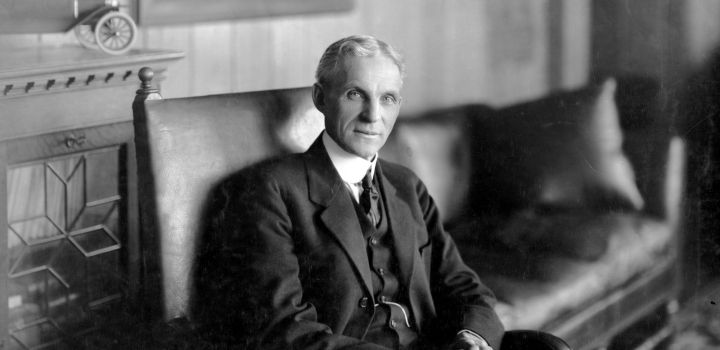“So the final conclusion would surely be that whereas other civilizations have been brought down by attacks of barbarians from without, ours had the unique distinction of training its own destroyers at its own educational institutions, and then providing them with facilities for propagating their destructive ideology far and wide, all at the public expense…himself blowing the trumpet that brought the walls of his own city tumbling down… Until at last, having educated himself into imbecility, and polluted…himself into stupefaction, he keeled over–a weary, battered old brontosaurus–and became extinct.” ~ Malcolm Muggeridge
Although Muggeridge was talking about the crumbling of Western society’s moral foundations, I think his observations apply to the world of marketing (especially online) in many ways.
Hear me out.
My friend Dov Gordon wrote a very insightful post entitled “Why Don’t I Implement the Marketing I Should Be Doing?” on his blog yesterday. The headline grabs our attention because it’s talking about an experience most of us are familiar with. How much time and money have we invested in learning marketing techniques and strategies that we’ve never used? How many newsletters do we get and read (including this one) but never put the ideas we get into practice?
I’m guilty of it, too, more than I’d like to admit. For example, the photo above is a shot of around $10k of infoproducts sitting on my bedroom floor. A telling illustration if I’ve ever seen one.
Ideas to Action
Education is a good thing. Information is critical to everything we do in life. But education and information has to lead us some place, not just fill out heads with “book knowledge.”
“The object of education is not knowledge; it is action.” ~ Thomas à Kempis
This should be self-evident, but the point often eludes us. We frequently, inadvertently make education an end unto itself. Twelve-plus years of public school will do that to you…
What you need is almost certainly not more information. You need to begin acting on what you do know and continue learning as you go. Action will help put new information into context, leading to continually-optimized action.
Don’t let education be your excuse for procrastination or your refuge from the terrors of the real world.
“Action is the foundational key to all success.” ~ Pablo Picasso
If you’re not moving on the information you consume, you’re blocking your own path to success. Success is the result of value creation; creation is an action. Three quick suggestions:
- Act on what you know now.
- Put what you learn in the future into practice as soon as you can do so responsibly.
- Stop wasting time obtaining information you’re not going to use. As Sherlock Holmes told Watson in A Study in Scarlet:
“I consider that a man’s brain originally is like a little empty attic, and you have to stock it with such furniture as you choose. A fool takes in all the lumber of every sort that he comes across, so that the knowledge which might be useful to him gets crowded out, or at best is jumbled up with a lot of other things…the skillful workman is very careful indeed as to what he takes into his brain-attic. He will have nothing but the tools which may help him in doing his work, but of these he has a large assortment, and all in the most perfect order. It is a mistake to think that that little room has elastic walls and can distend to any extent..there comes a time when for every addition of knowledge you forget something that you knew before. It is of the highest importance, therefore, not to have useless facts elbowing out the useful ones.”
Countless millions of would-be marketers have educated themselves into imbecility by making information an end instead of a means. Many of them take what they’ve “learned” but never used, repackage it and try to market that information to other newbies.
When amateur marketers sell marketing information to amateur marketers (who probably plan to do the same thing), we have the blind leading the blind. A large part of the industry may end up in a ditch.
Focus on action and you’ll avoid the collapsing walls of Marketropolis.
P.S. If these articles aren’t helping you get active and improve those actions, I encourage you to unsubscribe.
Seriously.
Not that I want you to leave, but if I want to be consistent, my newsletter has to meet the same criteria I’m asking you to hold everyone else to. If there’s something I can do to make these communications more action-inducing, let me know. I don’t want to be party to any procrastination or avoidance of the nitty-gritty of real-life business.










